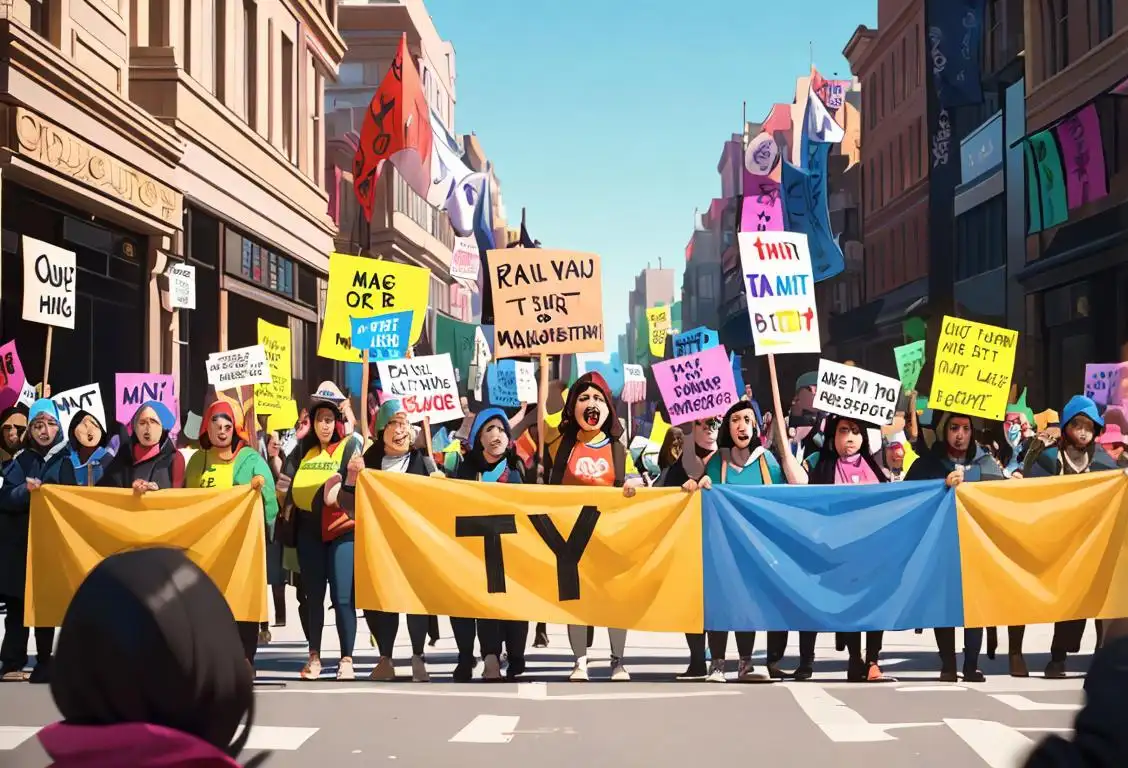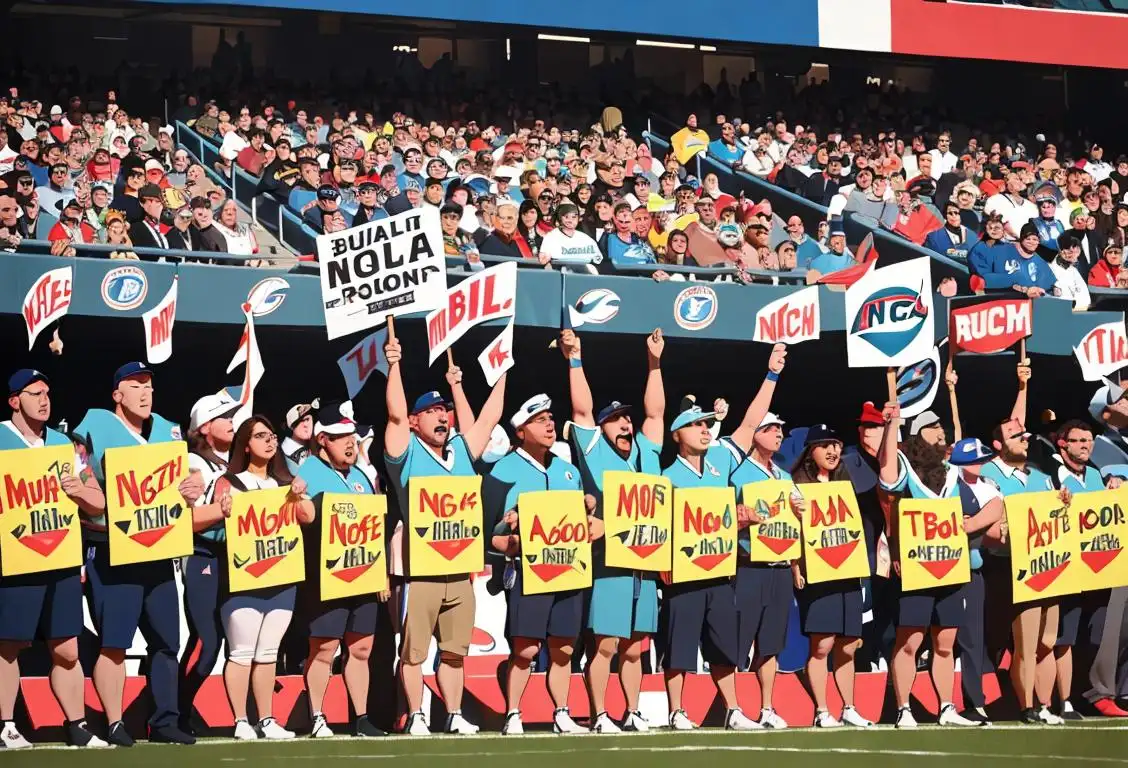National Disability Call In Day

Welcome to the fascinating world of National Disability Call In Day! It's a day dedicated to raising awareness about disabilities and advocating for better access and inclusivity. So, grab your phone and get ready to make some calls that can make a difference!
When is Disability Call In Day?
It's national disability call in day on the 11th December.
The Internet History of National Disability Call In Day
National Disability Call In Day originated in the realms of the internet, where people began to recognize the need for a day dedicated to disabilities awareness. Social media platforms and online forums played a vital role in spreading the word and organizing events to promote inclusiveness.
On this day, people are encouraged to reach out to their local representatives, call hotlines, and voice their concerns about disability rights. It's a collective effort to make sure that the voices of people with disabilities are heard and that necessary changes are made.
While the exact online origin of National Disability Call In Day remains a bit of a mystery, its impact is undeniable. It has grown into a movement where individuals, organizations, and communities participate in various activities and initiatives to support disabilities rights.
Fun Activities to Support National Disability Call In Day
1. Organize a virtual panel discussion or webinar to educate others about disabilities and the challenges faced by individuals with disabilities.
2. Start a social media campaign using the hashtag #CallInForDisability and share stories of triumph and inspiration.
3. Reach out to local businesses and encourage them to make their spaces more accessible to people with disabilities.
4. Spread awareness by creating colorful infographics or posters that highlight the importance of inclusivity.
Remember, the internet is a powerful tool that can be used to make positive changes in society. Use it wisely on National Disability Call In Day and beyond!
History behind the term 'Disability Call In'
1990
Introduction of the Americans with Disabilities Act
In 1990, the Americans with Disabilities Act (ADA) was signed into law by President George H.W. Bush. The ADA was a groundbreaking piece of legislation that aimed to protect the rights of individuals with disabilities. It prohibited discrimination against people with disabilities in various areas of life, including employment, public services, and telecommunications.
1975
The beginning of the movement
In 1975, the disability rights movement gained significant traction and began to fight for equal rights and accessibility for people with disabilities. This movement aimed to challenge societal norms that often treated disabled individuals as second-class citizens. Advocates for disability rights emphasized the importance of inclusion and accommodations in all aspects of life, including employment.
1980
The Birth of Disability Call-In
In 1980, the term 'disability call-in' was coined to describe the practice of individuals with disabilities calling their workplaces to inform their employers that they would be unable to come to work due to their disability. This term emerged as a way to differentiate these specific calls from other types of employee absences.
1990
The Americans with Disabilities Act
In 1990, the Americans with Disabilities Act (ADA) was signed into law in the United States. This landmark legislation aimed to protect the rights of individuals with disabilities and prohibit discrimination against them. The ADA played a significant role in shaping the cultural understanding and acceptance of disability accommodation in the workplace, including the practice of disability call-ins.
1999
The Rise of Disability Call-In Services
As more and more companies started recognizing the importance of inclusivity and accommodating individuals with disabilities, they began offering disability call-in services to facilitate communication and support. These call-in services allowed employees with disabilities to report their absence or request any necessary accommodations. This step, in turn, contributed to fostering a more accessible and inclusive work environment.
1990
Enactment of the Americans with Disabilities Act (ADA)
In 1990, a significant milestone in the history of disability rights occurred with the enactment of the Americans with Disabilities Act (ADA) in the United States. The ADA aimed to prohibit discrimination against individuals with disabilities and ensure equal opportunities in various domains such as employment, public services, and transportation. This legislation played a crucial role in fostering a more inclusive and accessible society by emphasizing the importance of reasonable accommodations.
1992
Introduction of the term 'disability call in'
The term 'disability call in' emerged in the early 1990s as a way to describe the practice of calling in sick due to a disability-related issue. This term gained prominence as more individuals with disabilities felt comfortable asserting their rights to take time off work when necessary. Recognizing that disabilities can vary in their impact on an individual's ability to work, the term 'disability call in' reflects the need for employers to acknowledge and accommodate these situations.
2008
Advancements in Telecommunication Technology
The advent of advanced telecommunication technology, such as internet-based voice and video calling, further revolutionized disability call-in services. This advancement allowed individuals with disabilities to communicate and interact with their employers or colleagues remotely, providing them with greater flexibility in the workplace. The rapid development of these technologies also contributed to breaking down barriers and stereotypes associated with disabilities.
2008
Advancements in Remote Communication
With the proliferation of mobile phones and the advancement of telecommunication technologies, the ability for individuals with disabilities to communicate remotely became more accessible. This technological progress enabled employees to comfortably engage in disability call-ins without the need for physical presence.
2010
The Rise of Flexible Work Arrangements
In the 2010s, there was a growing recognition of the benefits of flexible work arrangements. Employers began to embrace practices such as telecommuting, remote work, and flextime, which provided individuals with disabilities more opportunities to call in and work from home when necessary. Disability call-ins were seen as an integral part of these flexible work policies.
2010
Increased Accessibility Awareness
In recent years, there has been a significant increase in accessibility awareness across various industries and sectors. Employers have recognized the importance of providing accessible workplaces and ensuring that employees with disabilities have equal opportunities. Disability call-in services have become an integral part of these accessibility efforts, allowing individuals with disabilities to communicate their needs effectively and access the necessary support systems.
2008
Increased awareness and advocacy
In 2008, the disability community gained more visibility and recognition thanks to increased awareness and advocacy efforts. Numerous organizations and individuals worked tirelessly to promote the rights and well-being of people with disabilities. This ongoing advocacy led to a better understanding of the importance of disability call-ins and a more supportive work environment for disabled individuals.
Present
Continued progress and challenges
Today, the term 'disability call in' remains relevant in discussions surrounding workplace accommodations and the rights of individuals with disabilities. While there has been significant progress in creating more inclusive workplaces, challenges still exist. Issues such as stigma, discrimination, and inadequate accommodations persist, highlighting the ongoing need for advocacy and education to ensure equal opportunities for people with disabilities.
2021
Normalization and Cultural Acceptance
In recent years, there has been a shift towards greater normalization and cultural acceptance of disability call-ins. Society has increasingly recognized the importance of accommodating individuals with disabilities and creating inclusive work environments. Disability call-ins are now commonly understood as a legitimate means for employees to fulfill their work responsibilities while managing their disabilities effectively.
Did you know?
Did you know that the disability rights movement gained significant momentum thanks to the internet? Online platforms provided a space for people to connect, share stories, and fight for change. So, celebrate National Disability Call In Day by recognizing the power of the online world in shaping a more inclusive society!Tagged
awareness internet disabilitiesFirst identified
23rd September 2017Most mentioned on
11th December 2017Total mentions
132Other days
Disability Call In Day
Where The Hell Am I Day
Vietnam Veterans Day
Content Day
Demonstration Day
Podcast Day
Unity On Day
Friend Day
Boycott Of The Nfl For Day
Media Buries Two Violent Hate Crimes Against White Men In The Same Day







